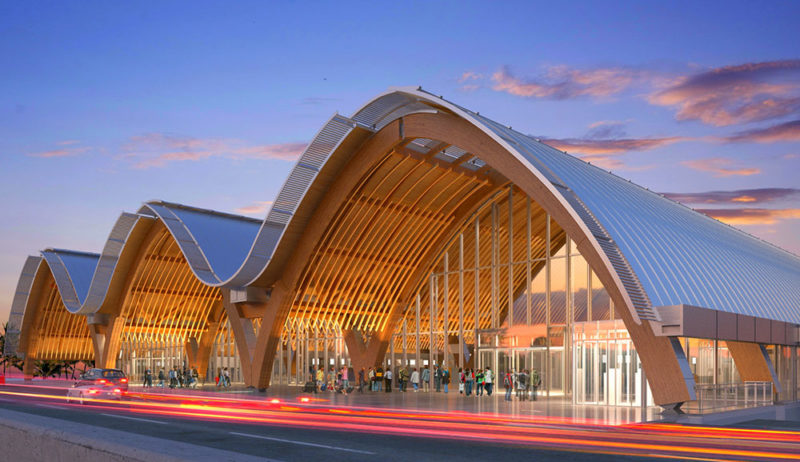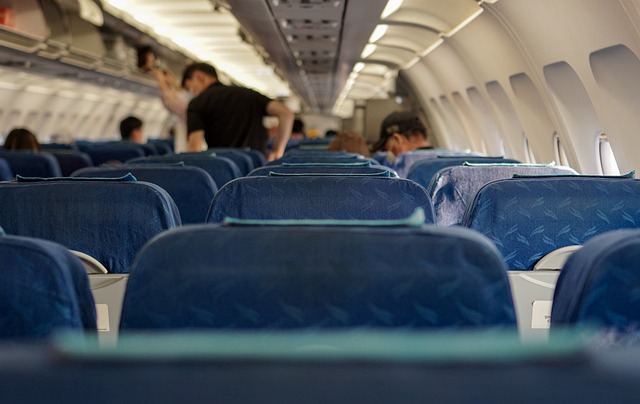-
Mactan-Cebu International Airport passenger traffic is expected to hit pre-pandemic levels of around 12 million this year
-
Aboitiz InfraCapital GMR Megawide Cebu Airport Corp. CEO Anthanasios Titonis said growth in passenger volumes will come mainly from MCIA’s two main markets—domestic and South Korea
-
Direct flights to new emerging markets, including Australia, India, and Russia eyed
Mactan-Cebu International Airport (MCIA) passenger traffic is expected to hit pre-pandemic levels of around 12 million this year, according to an official of operator Aboitiz InfraCapital GMR Megawide Cebu Airport Corp. (AGMCAC).
The 12 million target this year, which is 20% higher than the 10.032 million passengers recorded at MCIA in 2023, will be “on the same level like we had pre-COVID,” AGMCAC chief executive officer Anthanasios Titonis told PortCalls in a chance interview at the sidelines of the recent 6th Philippine Airport Modernization and Expansion Summit.
Titonis said growth in passenger volumes will come mainly from MCIA’s two main markets—domestic and South Korea.
Last year, MCIA recorded an 81% year-on-year increase in passenger traffic to 10.032 million from 5.529 million. Of last year’s total , 7.528 million were domestic passengers while 2.504 million were international passengers.
Air traffic movement also grew 68% in 2023, with the launch of new routes and the resumption of domestic and international routes. By the end of 2023, MCIA was serviced by 20 airlines—five domestic and 15 international—and was connected to 40 destinations, of which 28 were domestic and 12 were international.
AGMCAC senior manager for airline marketing Rodante Virata Ponio, Jr. in a presentation during the same event noted that MCIA’s core international markets such as South Korea, China, Japan, Singapore, Taiwan, and Hong Kong have mostly remained the same for the past decade, but they are now eyeing emerging markets for Cebu, such as Australia, India, and Russia.
Ponio noted there are currently no direct flights to these markets and AGMCAC’s team “is working very hard to get those flights into Cebu in the next couple of years.”
Titonis said their team will be meeting with Indian carriers by October and they hope to have the direct flights from India either this year or the next.
“I think the biggest market for us in the future is India,” Titonis said, adding that the South Asian country is growing, including its outgoing tourism.
Cebu Connect
Aside from adding more routes, AGMCAC has also started a new project as it envisions MCIA as the tourism and transfer gateway of the country.
Last June, AGMCAC launched Cebu Connect, which is designed to facilitate efficient and seamless airport transfers within MCIA, thereby reducing layover time and maximizing comfort and convenience for travelers.
In collaboration with government counterparts such as Mactan-Cebu International Airport Authority, Bureau of Customs, and Bureau of Immigration, Cebu Connect aims to boost tourism in the Philippines by positioning Cebu as an ideal entry point for both domestic and international tourists.
Under the project, Ponio said the airport operator is adjusting the minimum connecting time for domestic-to-domestic flights by 35 minutes, and 60 minutes for international-to-international, and for domestic-to-international and vice versa.
Ponio said partner domestic airlines have managed and will be “adjusting all their schedules” to be able to connect Cebu to local routes in 35 minutes.
To further enhance connectivity, Titonis said the next step is to connect MCIA’s two terminals. The building connecting the two terminals will also serve as an additional terminal, adding more capacity and space.
Leveraging on Cebu’s geographical location in the center of the Philippines and its proximity to other island tourist destinations, another project that AGMCAC is eyeing is an “air to sea” interconnectivity wherein airline passengers can be transported directly from the airport to various destinations via boats/ferries. Titonis noted that some airports around the world are already doing this.
For the first phase, AGMCAC targets seamless connectivity to Bohol, with Ponio noting around 30-40% of international and domestic travelers going to Cebu also going to Bohol.
Other tourist destinations in Cebu that currently take hours of land travel from the airport will come under phase two. For example Ponio said Oslob, which is around five hours’ travel on bad traffic and three hours on good, will only take two hours via water transport.
For phase three, the target is to connect to nearby islands around Cebu that are also tourism destinations, such as Camotes, Olango, Bantayan, Malapascua, and Siquijor.
Titonis said they will be tapping a third party for the project, which may start by 2026 or earlier next year. – Roumina Pablo









